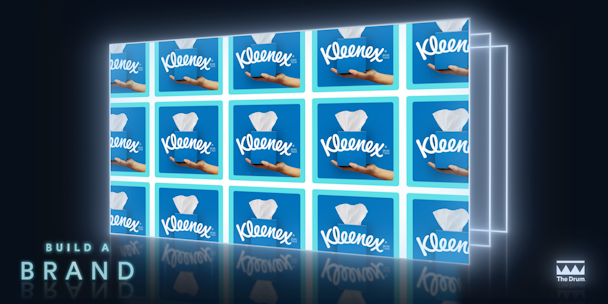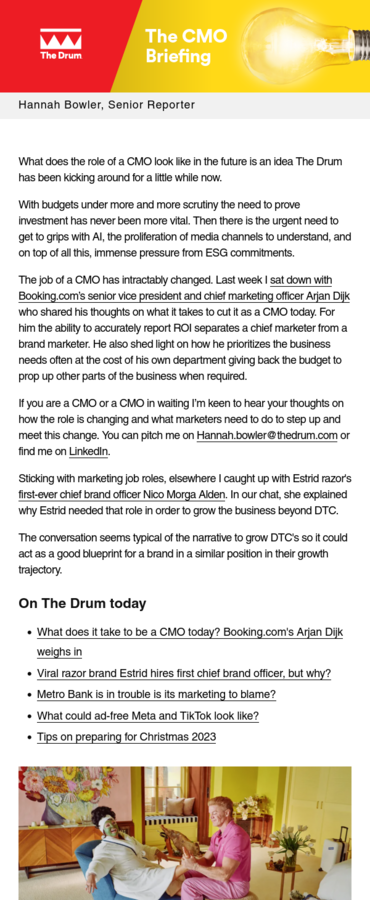Learn how Kleenex has mastered the art of brand salience
There is a reason why Kleenex is the number one selling facial tissue brand in the world – brand salience. When runny noses make an appearance, Kleenex is top-of-mind for most consumers.

Building brand salience with Kleenex / Kleenex
Anyone who has ever had a cold knows that 'Kleenex' has become synonymous with facial tissues. Used interchangeably, many people don’t differentiate that Kleenex is in fact a brand name, while facial tissue is the generic form. Despite this little quirk, Kleenex is top of mind when thinking of tissues. Whether you are sneezing, wiping makeup, or crying, Kleenex is the thought that pops up in our brains. This is brand salience – and Kleenex has perfected the art.
What is brand salience?
To put it simply, it’s the degree to which consumers think of your brand when making a purchase. To address it technically, it’s the memory structure (quantity and quality) that consumers retain about a brand. It’s a key performance measure of how well your brand is thought of and perceived. It’s being top of mind - at the right time, in the right place. Every brand’s dream.
Let’s look at how Kleenex has managed to retain its perch on the brand salience throne and how you can learn a thing or two about its methods.
Advertisement
How to begin your brand salience
Kleenex Tissue was first presented to the public in 1924 with a package of 100 carefully, intertwined sheets selling for 65 cents. The name Kleenex, was derived from the words ‘clean’ and ‘Kotex’, another company product. According to the company’s website, the name “met our requirements for being short, easy to say, easy to remember, and easy to explain”. By recognizing the four critical components of brand salience, Kleenex immediately hit the nail on the head.
Originally marketed as a cold cream remover, Kleenex brought disposable facial tissues mainstream as an alternative to handkerchiefs. Their ‘Don’t carry a cold in your pocket’ marketing campaign was a successful repositioning effort to make wider use of their product. They marketed to the general public, with women as their main target, and managed to capitalize on the nation’s attempt to stay clean and healthy before and during the Great Depression. Their uncanny ability to ride the waves of ‘consumer needs’ and adapt to the times, allowed Kleenex to establish a concrete foothold in the health and wellness market. Their brand salience had begun.
Advertisement
The difference between brand salience and brand awareness
As most marketers know, brand awareness is the familiarity consumers have concerning your brand and how easily recognizable it is. Brand salience on the other hand, is the result of your brand being top-of-mind, an immediate thought when someone is in the market for the types of products you offer. Kleenex began this revenue producing journey early on.
Their facial tissues were billed as a cheaper and easier alternative to handkerchiefs since they needed no laundering. They promoted the ‘Kleenex habit’ and encouraged people to keep a box in every room of their home, as well as their cars.
By establishing themselves as a healthy product, Kleenex tissues became a lifestyle for consumers who were concerned about remaining healthy. It is this ‘lifestyle’ type of marketing that struck a chord among consumers and the Kleenex brand snowballed into a portfolio of wholesome, clean products that furthered their image, as well as their ability to be remembered. They easily surpassed the typical product thought process of consumers (brand awareness) and established themselves as the go-to product for illness or other needs (brand salience).
Suggested newsletters for you
Building brand salience
Company longevity can play a definitive role in creating brand salience, but it is the emotional connection with customers that seems to play the biggest part.
Kleenex pulled out all the stops when they began a “Kleenex – True Confessions” campaign in the 1930’s, encouraging customers to share their Kleenex stories. The "give us your story and we will give you $5" promotion took off and soon their newspaper ads were comprised of silly sketches and real customer stories. This clever campaign succeeded because it drew customers into the world of Kleenex tissues. Quirky, funny, and emotional, these stories showed how Kleenex tissues could improve the lives of consumers. Real stories from real people. Trust was established and in a big way.
Fast forwarding to the current century, Kleenex stayed tried and true to their consumer marketing ethos by promoting itself as a ‘gesture of care’, when a survey revealed that 50% of respondents felt they missed an opportunity to demonstrate care to someone. To remedy this, they created “real-time moments of care” videos on YouTube and Facebook, providing raw footage of Kleenex’ role in the lives of customers. They also allowed customers to upload their Kleenex experiences as well as post motivational messages on Kleenex.com. As a result, their social media interactions increased six times past it’s typical numbers, their brand salience grew stronger, and Kleenex retained its marketing throne.
Brand salience wrapup
While most brands don’t have the longevity of Kleenex, nor the perfect timing of a nation in need of wellness products, they do have the ability to establish their own brand salience. Here is a quick rundown of the lessons to be learned from Kleenex’ brand salience journey:
1. Capitalize on current consumer needs
2. Allow customers to be part of your marketing process
3. Establish strong emotional connections
4. Remain consistent in your marketing efforts
5. Build trust
6. Adapt to the times
Staying at the forefront of a consumer’s mind when specific needs arise, is the achievement of thoughtful marketing and promotional goals. When trust, emotion, and needs are met with consistency and intentional messaging then brand salience can be established. Runny nose? Reach for a tissue. Need a perfect example of brand salience? Reach for a Kleenex.
For more brand building insights, sign up for The Drum Plus.

